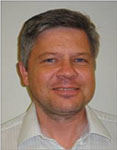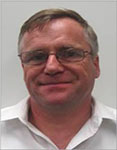Production of methane from hydrate deposits beneath the Nankai Trough
John Ballantyne A and Henry Sheil APeritus International Pty Ltd
The APPEA Journal 52(1) 581-586 https://doi.org/10.1071/AJ11046
Published: 2012
Abstract
The U.S. Geological Survey (USGS) has estimated there is upwards of 100,000 trillion cubic feet (Tcf) of global methanehydrate resources, worldwide (Collett, 2011).
The Japan Oil Gas and Metals National Corporation (JOGMEC) has been actively evaluating the potential of developing methane hydrate marine sediments as a resource. There have been trials in onshore Canada in 2007 and 2008; and, there are plans to test offshore production in the next few years.
Existing plans involve two well tests in the eastern Nankai Trough, offshore Japan. An initial short-term well test of up to one month will be followed by an extended well test of up to six months.
The production method trialled in Canada and planned for the offshore well tests is depressurisation. This involves drilling from the surface (or seabed) to a subsurface methane
hydrate zone and reducing the formation pressure to a point where the methane hydrates dissociate to methane and water. The gas and water are then transferred to the surface, the water is treated for disposal and the gas is treated for exportation.
Recent research was done to confirm the technical feasibility of the planned offshore well tests. This research examined:
production mechanism and flow assurance;
production host functional specification;
subsea equipment including flowlines, production riser and electro-hydraulic umbilical;
topsides well test equipment; and,
procurement and installation methodology.
The main conclusion made was confirmation of the technical feasibility of the proposed offshore well test. The key challenges, uncertainties and areas for future focus in the lead up to the proposed offshore well tests were also highlighted.

John Ballantyne is a chartered chemical engineer with more than 20 years’ experience in upstream and downstream oil and gas. He has experience in operations, projects and developments both offshore and onshore, and in particular field development studies. After working in the UK, Norway, Netherlands, Australasia and the Middle East, he is now based in Perth, WA, and employed as a consultant by Peritus International. While at Peritus, John has been heavily involved in two studies for JOGMEC on the proposed offshore well tests planned for the eastern Nankai Trough and has previous experience in CSG developments. John’s career has included staff and contract roles with Woodside, Shell, BP and Texaco, among others. john.ballantyne@peritusint.com |

Henry Sheil is a chartered engineer with 30 years’ oil and gas facilities experience, mostly concerning subsea production systems for both operating companies and consultants. Henry initially gained experience in the North Sea sector and from 1991 in the Asia Pacific region. Henry was Peritus’ study leader for the JOGMEC study detailed in this paper. Henry holds a first class Honours degree in mechanical engineering from the National University of Ireland (Dublin). Henry gained his chartered engineer qualification (C.Eng MIEI) from the Institution of Engineers of Ireland, and has a Graduate Diploma in Business from Curtin University in WA. Member: SPE and SUT. henrys@iinet.net.au |


